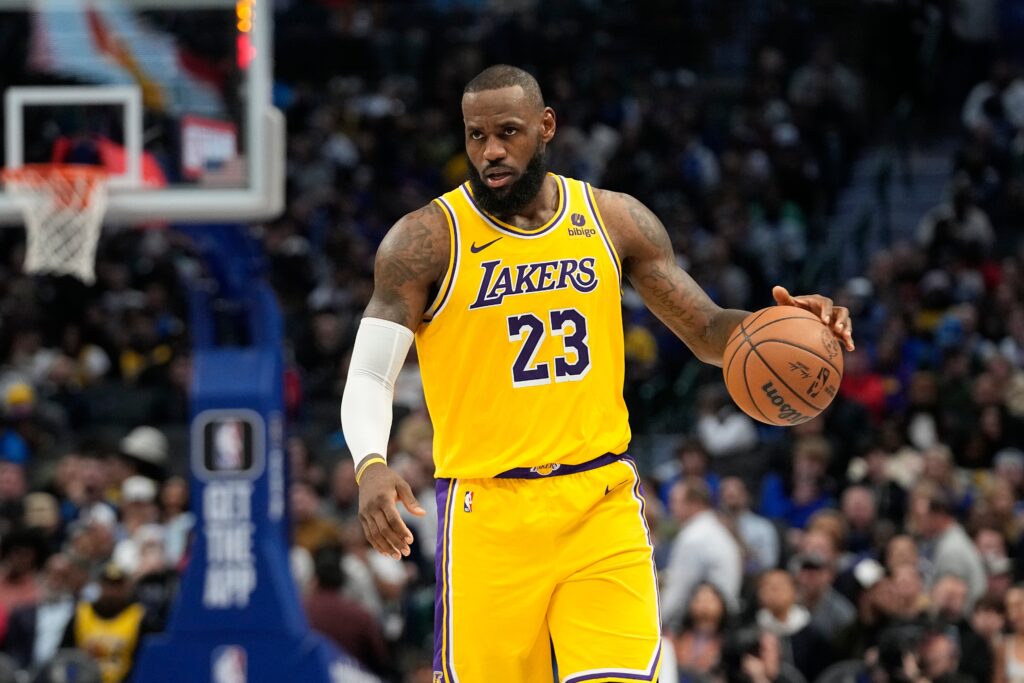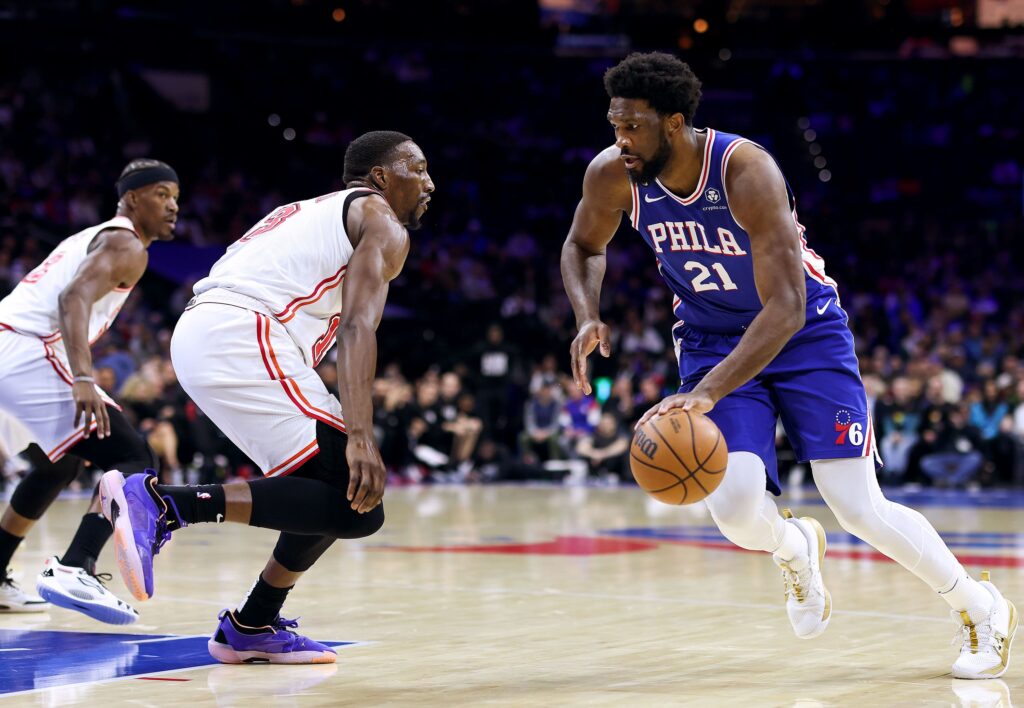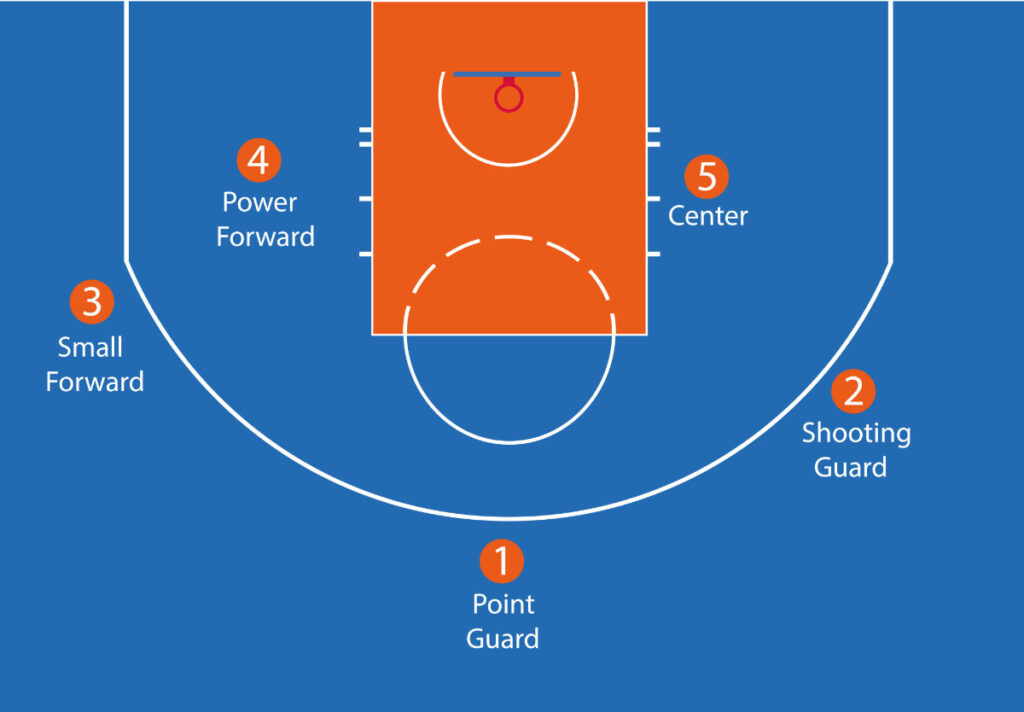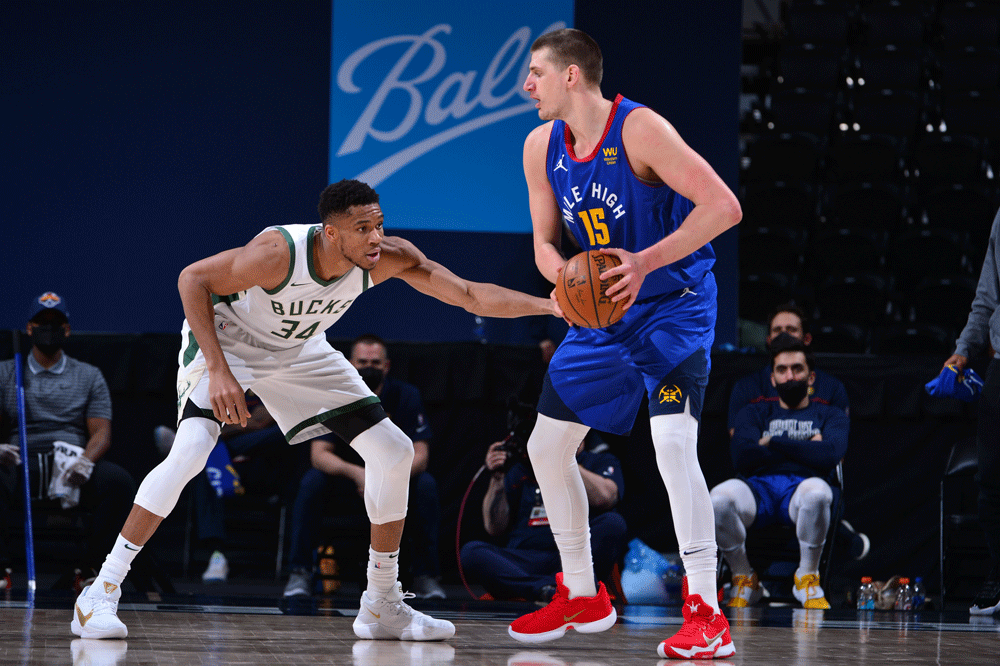Table of Contents
- 0.1 Introduction
- 0.2 Basketball Rules
- 0.3 How Many Players In A Basketball Team?
- 0.4 Roles of Five Players On the Basketball Court
- 1 How Many Players on the Basketball Team? Basketball Rules and Player Roles
- 1.1 Introduction
- 1.2 Basketball Rules
- 1.3 How Many Players In Basketball Team?
- 1.4 Roles of Five Players On the Basketball Court
- 1.5 How Long Is a Basketball Game?
- 1.6 Basketball Rules of Substitutions
- 1.7 Importance of Understanding Basketball Player Roles
- 1.8 Frequently Asked Questions
- 1.8.1 What are the different roles or positions in basketball?
- 1.8.2 Are there any specific rules regarding the number of players on the court during a basketball game?
- 1.8.3 Can a basketball team have more or fewer players than the standard roster size?
- 1.8.4 How are basketball games timed?
- 1.8.5 How are players assigned to different positions on a basketball team?
- 1.8.6 Are there any other rules and regulations related to basketball?
Introduction
Basketball rules and the quantity of players on the court can significantly impact the game’s dynamics and outcome. Basketball is one of the most popular sports for betting, with millions of people playing it both professionally and recreationally, so understanding these rules and player roles is very important for any basketball fan. In this article, we’ll take a closer look at basketball rules and team composition, as well as reveal in more detail which roles each player may have in a basketball team.
Basketball Rules
Before learning how many players usually make up a basketball team, it’s important to understand the rules of the game. So what is basketball? It is very popular around the globe sport where two teams consisting of five players compete against each other on a rectangular court, with one team attempting to score points by throwing a ball through an elevated hoop called the basket. The main goal of basketball for each team is to outscore their opponents by almost any means, although some rules have been established to ensure fair and safe game.
The most common rule is that every player must stay within their designated boundaries at all times; if they step outside these boundaries, they may be penalized or even ejected from the game depending on the severity of their action. Additionally, all players must abide by the rules of personal physical contact, with excessive contact resulting in a foul being called. These fouls can range from pushing to tripping and beyond, and if enough fouls are committed they can result in a player being ejected from the game.
How Many Players In A Basketball Team?
Number of players on the court in street basketball
While the rules of basketball are universally applicable, the quantity of players within a team can fluctuate according to the specific variant of the game. To illustrate, street basketball conventionally involves two teams, each consisting of a maximum of four players. This is due to the size and setup of typical street courts, which are often much smaller than professional or school-level basketball courts.
Number of players on the court in professional basketball
At the professional level, basketball teams typically consist of five players. This applies both for men’s and women’s professional basketball, as well as in youth play or high school-level basketball. The five players on a professional basketball team can be divided into two main positions: guards and forwards.

Roles of Five Players On the Basketball Court
Point Guard
Traditionally, the point guard assumes the role of the smallest and the most agile athlete on the court, responsible for managing the team’s offense. The point guard’s responsibilities encompass proficient ball-handling, which grants him the authority to regulate the tempo of the game and initiate plays. Beyond his offensive position, the point guard must also be able to defend against other players, trying to seize or disrupt possession of the ball.
Shooting Guard
The shooting guard holds the most crucial role in the team – he is the primary point contributor and he is typically one of the tallest players on the court. The shooting guard should be very precise in ball shooting and should be able to accurately throw the ball in the basket from long and midrange distances and at the same time to defend from other teams’ scoring threats. Additionally, they often bear the responsibility of bringing the ball up the court in transition situations, thereby creating scoring opportunities even in situations where they don’t have possession of the ball.
Small Forward
The small forward is a versatile player, he should make both offensive contributions and defensive maneuvers against opponents. These players typically are taller than guards but shorter than centers, this granting them an advantage in rebounding and shot-blocking. Apart from their defensive responsibilities, small forwards frequently initiate fast breaks for their team by making quick passes to open players.
Power Forward
The power forward, usually one of the the court’s tallest athletes, assumes a central role in rebounding and defensive maneuvers. Their key role is to box out opponents and defend against other tall players in the post. Furthermore, they are also often expected to score from close range or off of offensive rebounds.
Center
The center is usually the tallest athlete on the court and plays a crucial role in both offense and defense. In addition to being able to score inside, centers must be able to block shots or defend against taller opponents by using their size and strength advantage. Additionally, centers are often tasked with setting screens for their teammates in order to create scoring opportunities.
How Many Players on the Basketball Team? Basketball Rules and Player Roles
Introduction
Basketball rules and the quantity of players on the court can significantly impact the game’s dynamics and outcome. Basketball is one of the most popular team sport for betting, with millions of people playing it both professionally and recreationally, so understanding these rules and player roles is very important for any basketball fan. In this article, we’ll take a closer look at how many players in basketball rules and team composition, as well as reveal in more detail which roles each player may have in a basketball team.
Basketball Rules
Before learning how many basketball players usually make up a basketball team, it’s important to understand the rules of the game. So what is basketball? It is very popular around the globe team sport where two teams consisting of five players compete against each other on a rectangular basketball court, with one each team member attempting to score points by throwing a ball through an elevated hoop called the basket. The main goal of basketball for each basketball team is to outscore their opponents by almost any means, although some rules have been established to ensure fair and safe game.
The most common rule is that every player must stay within their designated boundaries at all times; if they step outside these boundaries, they may be penalized or even ejected from the game depending on the severity of the foul committed by their action. Additionally, all basketball players must abide by the rules of personal physical contact, with excessive contact resulting in a foul being called. These fouls can range from pushing to tripping and beyond, and if enough fouls are committed they can result in a player being ejected from the game.

How Many Players In Basketball Team?
Number of players on the court in street basketball
While the rules of basketball are universally applicable, the number of players within a team can fluctuate according to the specific variant of the game. To illustrate, street basketball conventionally involves two teams, each consisting of a maximum of four players. This is due to the size and setup of typical street courts, which are often much smaller than professional or school-level basketball courts.
Number of players on the court in professional basketball
At the professional level, basketball teams typically consist of five players. This applies both for men’s and women’s professional basketball, as well as in youth play or high school-level basketball, court street basketball, and college basketball. The five players on a professional man or women’s basketball team can be divided into two main positions: guards and forwards.
Roles of Five Players On the Basketball Court
Point Guard
Traditionally in college basketball, the point guard assumes the role of the smallest and the most agile athlete on the court, responsible for managing the team’s offense. The guard’s responsibilities encompass proficient ball-handling, which grants him the authority to regulate the tempo of the game and initiate plays. Beyond his offensive position, the guard must also be able to defend against other players, trying to seize or disrupt possession of the ball.
Shooting Guard
The shooting guard holds the most crucial role in the team – he is the primary point contributor and he is typically one of the tallest players on the court. The shooting guard should be very precise in ball shooting and should be able to accurately throw the ball in the basket from long and midrange distances and at the same time to defend from other teams’ scoring threats. Additionally, they often bear the responsibility of bringing the ball up the court in transition situations, thereby creating scoring opportunities even in situations where they don’t have possession of the ball.
Small Forward
The small forward is a versatile player, he should make both offensive contributions defending team, and defensive maneuvers against opponents. These players typically are taller than guards but shorter than centers, this granting them an advantage in rebounding and shot-blocking. Apart from their defensive responsibilities, small forward frequently initiate fast breaks for their team by making quick passes to open players.
Power Forward
The power forward, usually one of the the court’s tallest athletes, assumes a central role in offensive team, rebounding and defensive maneuvers. Their key role is to box out opponents and defend against other tall players in the post. Furthermore, they are also often expected to score from close range or off of offensive rebounds.
Center
The center is usually the tallest athlete on the court and plays a crucial role in both offense and defense. In addition to being able to score inside, centers must be able to block shots or defend against taller opponents by using their size and strength advantage. Additionally, centers are often tasked with setting screens for their teammates in order to create scoring opportunities.

How Long Is a Basketball Game?
FIBA – Fédération Internationale de Basketball Amateur
In FIBA (International Basketball Federation) games, the duration of a game is divided into four quarters, each lasting 10 minutes. This means that the total playing time is 40 minutes. However, there are also additional breaks and stoppages in play, which extend the overall duration of the game. These breaks include timeouts, halftime, and any necessary stoppages for fouls, free throws, or injuries. As a result, the average duration of a FIBA basketball game, including these stoppages, is usually around 1 hour and 30 minutes to 2 hours.
NBA – National Basketball Association
In the NBA, the duration of a basketball game is different from FIBA. NBA games consist of four quarters, each lasting 12 minutes. This means that the total playing time is 48 minutes. Similar to FIBA, there are additional breaks and stoppages in play, such as timeouts, halftime, and necessary stoppages for fouls, free throws, or injuries. As a result, the average duration of an NBA game, including these stoppages, is typically around 2 hours and 15 minutes to 2 hours and 30 minutes. However, it’s important to note that the actual duration can vary based on factors like the pace of play, the number of fouls, and other game-related circumstances.
NCAA – National Collegiate Athletic Association
In NCAA basketball games, the duration is also different from both FIBA and the NBA. NCAA games consist of two halves, each lasting 20 minutes. This means that the total playing time is 40 minutes, similar to FIBA. However, like the other leagues, there are additional breaks and stoppages in play for timeouts, halftime, fouls, free throws, and other necessary stoppages. As a result, the average duration of an NCAA game, including these stoppages, is typically around 1 hour and 45 minutes to 2 hours. Again, it’s important to note that the actual duration can vary based on various factors affecting gameplay.
High School Basketball
In high school basketball, the duration of a game follows a different format compared to FIBA, NBA, and NCAA. School basketball games typically consist of four quarters, each lasting 8 minutes. This means that the total playing time is 32 minutes. As with other basketball leagues, there are additional breaks and stoppages in play, such as timeouts, halftime, and necessary stoppages for fouls, free throws, or injuries. The average duration of a school basketball game, including these stoppages, is typically around 1 hour and 30 minutes to 2 hours. However, it’s important to note that specific rules and regulations regarding game duration may vary between different high school athletic associations and regions.

Basketball Rules of Substitutions
In basketball, teams are allowed to have up to five players on the court at any given time. In addition, basketball rules allow teams to substitute players during a game without penalty. This means that teams can bring in new players to replace existing ones as needed. Players who are substituted out of the game may return after a mandatory cooling-off period of one minute and can be substituted back in whenever they wish. Generally speaking, substitutions in basketball matches don’t impact the gameplay or length of the game itself, though certain situations where multiple substitutions take place may require additional stoppages and delays.
As we’ve seen, there are typically five players on a professional basketball team: point guard, shooting guard, small and power forward, and center. The duration of a basketball game also varies depending on the league, with FIBA and NCAA games lasting 40 minutes while NBA and high school basketball games typically last 48 minutes and 32 minutes respectively. Lastly, teams are allowed to substitute players freely during a game without penalty, though certain situations may require additional stoppages and delays. Ultimately, understanding how many players are on the team and how long a basketball game lasts can help you gain insight into the sport’s rules and regulations. With this knowledge in hand, fans can enjoy watching or playing basketball more effectively.
Importance of Understanding Basketball Player Roles
Understanding basketball player roles is crucial for several reasons, extending beyond the court dynamics to impact the overall success of the team.
Team Synergy and Chemistry
Effective team synergy and chemistry are foundational to success in basketball. When players understand and embrace their specific roles, they can seamlessly integrate into the team’s system. This cohesion fosters better communication, coordination, and a shared understanding of each player’s responsibilities on the court. A team that operates cohesively is often more resilient, adaptable, and capable of facing challenges with a united front.
Strategic Advantages
Comprehending player roles provides teams with strategic advantages. Coaches can strategically position players to exploit the opposing team’s weaknesses while safeguarding against their strengths. Whether through offensive plays or defensive setups, a well-coordinated understanding of player roles allows for the development and execution of effective strategies, increasing the team’s chances of success in any given match.
Maximizing Player Strengths
Every player brings a unique set of skills and strengths to the team. Understanding and leveraging these individual strengths contribute to the overall effectiveness of the team. Coaches can tailor strategies to capitalize on each player’s abilities, optimizing offensive and defensive tactics. This not only enhances the team’s performance but also fosters an environment where players feel valued and motivated to excel in their designated roles.
In Betting Strategies
For sports enthusiasts and bettors, understanding basketball player roles is integral to making informed predictions. Analyzing how players fit into their designated roles, their recent performances, and how well they complement each other provides valuable insights for predicting game outcomes. Betting strategies that incorporate a deep understanding of player roles can be more accurate and reliable, offering enthusiasts a more informed approach to basketball wagering.
Frequently Asked Questions
What are the different roles or positions in basketball?
The different roles or basketball positions in basketball are point guard, shooting guard, small and power forwards, and center.
Are there any specific rules regarding the number of players on the court during a basketball game?
Yes, most professional leagues allow only five players to be on the opposing team on the basketball court at any given time. Additionally, teams are allowed to substitute players during a game without penalty.
Can a basketball team have more or fewer players than the standard roster size?
Yes, some leagues and tournaments may allow teams to have more or fewer players than the standard roster size. However, it’s important to check the specific rules of the competition before participating.
How are basketball games timed?
Most professional leagues time basketball games by dividing them into quarters, each lasting a certain amount of minutes depending on the league. For example, NBA games consist of four quarters, each lasting 12 minutes for a total playing time of 48 minutes. Additionally, there are additional breaks and stoppages in play which extend the overall duration of team play during the game.
How are players assigned to different positions on a basketball team?
Typically, basketball players are assigned to different positions on a basketball team based on their individual skills and abilities. For example, players who are tall and have good ball-handling skills may be better suited for the center position while those who are more agile may be better suited for the guard position. Additionally, coaches often consider other factors like a player’s shooting ability or defensive awareness when assigning them to specific roles or positions.
Yes, in addition to the rules regarding players and playing time, there are also numerous other regulations that govern the game of basketball. These include rules regarding fouls, free throws, violations, and more. Additionally, many leagues have their own set of specific rules governing competition.
- What Is Arbitrage Betting – A Complete Guide And Winning Strategies - July 25, 2024
- Value Betting Guide – How To Get The Most Value Out Of Making Bets - July 18, 2024
- Guide to Betting Markets: Big, Middle and Small - July 9, 2024


















